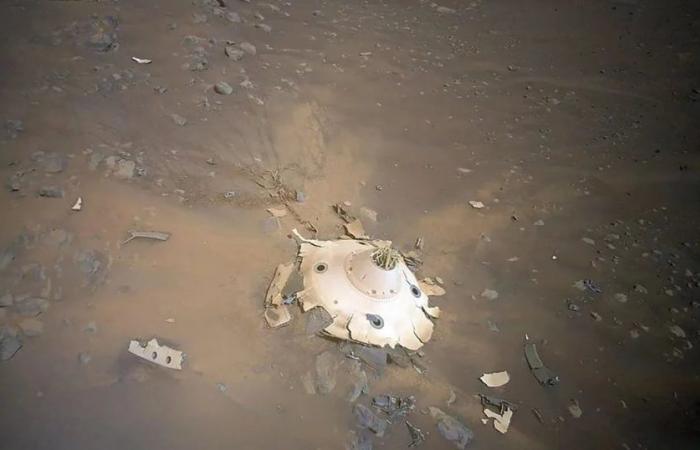In April 2022, an image captured by NASA from the surface of Mars began to circulate widely on social media, generating quite a stir. The photograph showed what some interpreted as “otherworldly remains” on the red planet, which caused both fascination and confusion among Internet users. But what does this image really show?
To begin with, it is important to clarify that the photograph is authentic. Captured on April 19, 2022 by NASA’s Ingenuity helicopter during its 26th flight on Mars, the image was taken at an altitude of approximately 8 meters above the planet’s surface. NASA has confirmed that the photo is real and is part of its Mars Sample Return program efforts.
The fascination with photography soon spread, especially on platform X (formerly known as Twitter), where one particular post racked up more than 3.2 million views. This phenomenon highlights how images from space can capture the public imagination and generate extensive, if sometimes misinformed, discussions about space exploration and the possibility of extraterrestrial life.
Despite its authenticity, The image has been the subject of numerous misinterpretations on social media.. Posts and comments on various platforms suggested that the photograph showed remnants of extraterrestrial technology, a notion that quickly went viral. These claims, while intriguing, are incorrect. The reality is much less sensational, but no less interesting from a scientific and technical point of view.
The photograph in question shows a white triangular-shaped object, surrounded by what appears to be a debris field, giving the impression of a rugged landing site.

To clear up any confusion, the website specializing in fact-checking Snoops, an analysis of the image using reverse image search tools such as Google Lens, revealed that The object in the photograph is actually the backshell and parachute of the Ingenuity helicopter. This equipment was an integral part of the landing of the Perseverance rover in Mars’ Jezero Crater on February 18, 2021. The photograph shows the backshell upright on the Martian surface, with the high-strength parachute cables scattered around, covered in dust Martian.
NASA has stressed the importance of these components to its mission, explaining how the heat shield and backshell work together to protect the craft during its entry and descent on Mars. According to Ian Clark, a NASA engineer who worked on Perseverance’s parachute system, “There’s definitely a sci-fi element to this… it exudes something otherworldly, doesn’t it?”
He aeroshella critical component of Mars landing missions, is composed of two main parts: the heat shield and the backshell. The heat shield protects the spacecraft from the intense heat generated during entry into the Martian atmosphere, while the backshell supports the parachute and other mechanisms essential for safe landing. During descent, the heat shield acts as an aerodynamic brake, significantly reducing the spacecraft’s speed, and subsequently, the parachute helps control the final descent before touchdown.
A deeper and more technical analysis of the image shows that the cables seen coming out of the top of the backshell, and which are coated in Martian dust, are high-strength suspension lines that connected the backshell to Perseverance’s supersonic parachute. These components protected the rover during its journey through deep space and during its descent to the Martian surface.
Speaking to the Seattle Times In April 2022, Ian Clark, a NASA engineer involved in Perseverance’s parachute system, commented on the photographs: “There’s definitely an element of science fiction to this… it exudes something otherworldly, doesn’t it? ”. This observation highlights how elements of space missions can seem futuristic and even alien, despite being products of human engineering.






